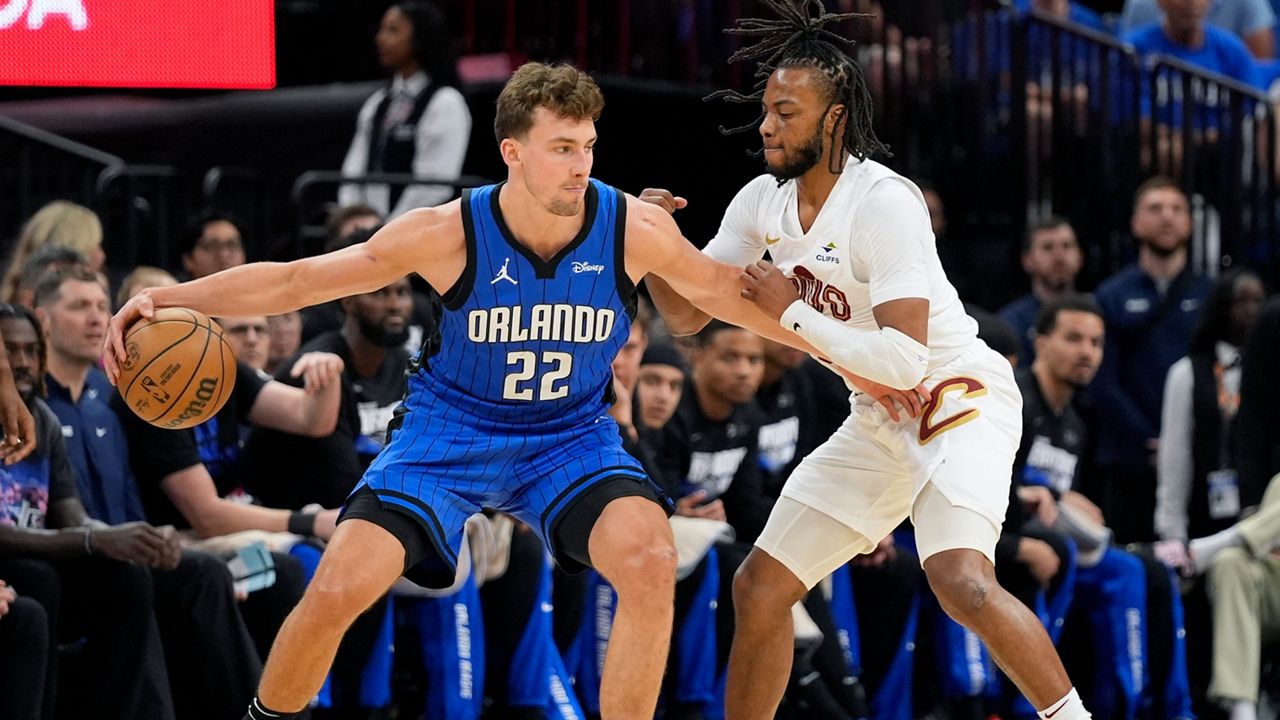This isn’t a controversial statement or a hot take. It’s just data: The most popular college basketball player in America is Caitlin Clark.
Viewership for games involving the Iowa guard has been extraordinary over the past 12 months, including the 9.9 million viewers — a women’s college basketball record — who watched LSU defeat the Hawkeyes last April in the title game on ABC. Iowa’s 93-83 win over Ohio State on March 3 averaged 3.39 million viewers on Fox, the second most-watched college basketball game this season regardless of gender, per Sports Media Watch, behind only a Michigan State–Arizona men’s game on Thanksgiving that had a direct lead-in from the NFL.
The most-watched Duke–North Carolina men’s game — long the standard bearer for regular-season college basketball ratings — this season got 3.2 million viewers. Per Michael Mulvihill, the president of insight and analytics at Fox Sports, women’s basketball games on Fox had averaged 981,000 viewers as of March 5, compared with 946,000 viewers for the men.
This year’s men’s and women’s NCAA Tournaments will be fascinating for many reasons, including a multitude of stars across women’s basketball, the South Carolina women’s team going for an undefeated season, Ian Eagle moving into the lead play-by-play role for the men’s Final Four and the men’s Final Four airing on TBS. Below, The Athletic’s Richard Deitsch and Andrew Marchand discuss some of the big-picture media storylines for March Madness.
Deitsch: Media nerds such as us have kicked around the notion that if Iowa makes the women’s title game — I don’t expect this to happen, but let’s play it out as a thought exercise — there is an outside shot that it could draw more viewership than the men’s final because of the Caitlin Clark factor and the women’s tournament airing on ABC while the men’s tournament is airing on TBS. What’s your thought here, Andrew?
Marchand: I think that is a legit possibility. Clark is the biggest story in college basketball. If she were to have a run to the finals, this idea would have even more steam. Last year, the NCAA men’s championship, pitting Connecticut vs. San Diego State on CBS, had 14.69 million viewers. Two years ago on cable, a great TV matchup featuring North Carolina and Kansas, picked up 17 million on linear television. So if you combined the momentum of a Clark run on broadcast TV to, let’s say, a subpar men’s final on TBS, TNT, etc., then you might have a chance for some TV sports history. The fact that we are even discussing this question is such a win for the women’s game.
Deitsch: I totally agree. I expect ESPN to unveil the most comprehensive coverage they’ve ever had for a women’s tournament. Remember, this year ESPN and the NCAA agreed to a new eight-year, $920 million media rights agreement through 2032 that includes the women’s basketball tournament. The deal ensures the women’s title game will be on ABC in each of the next eight seasons. (It should include the Final Four too, but I digress.) One thing that ESPN women’s basketball officials told me for years is that one of their perennial challenges was to get ESPN studio and debate shows to discuss more women’s basketball. But at least ESPN has a ton of shoulder women’s hoops programming. At non-ESPN networks, you are not likely to see a lengthy women’s hoops discussion. Before we get to the men’s tournament, as someone who has a ton of experience writing about sports studio programming, how do you see this?
Marchand: Studio shows choose to talk about the Cowboys, LeBron vs. MJ, or any of their other greatest hits because the audience responds to it. Clark has moved to that level of exposure. While we are discussing what it could mean for ratings and women’s basketball, the next step for shows is not just measuring what the increased interest means, but to dive into storylines. ESPN can lead the way by continuing to treat the event with respect.

On the men’s side, Ian Eagle this year will step into Jim Nantz’s old seat as the TV play-by-play voice for the Final Four. (Troy Taormina / USA Today)
Deitsch: OK, let’s move on to the men’s tournament. Before we get into the macro in terms of viewership interest, CBS/WBD made a huge move by promoting Ian Eagle into the lead play-by-play chair. This will be the first men’s Final Four since 1991 that Jim Nantz has not called. Eagle is a phenomenal basketball caller and, on the merits of calling basketball, he should have been in this chair years earlier. I think this is going to be a massive success. How do you see it?
Marchand: I’ve thought Eagle should be in the lead March Madness play-by-play chair for a long time. On hoops, Eagle and Mike Breen, who has called the NBA Finals forever, are the two best play-by-players. Eagle had been the Dan Marino of sportscasters, having been one of the most prolific, but without a title, so to speak. Now, he gets that. He will work with Bill Raftery and Grant Hill. Raftery and Eagle go way back from their Nets days. Hill never sounded better than when he teamed with Eagle in the opening rounds a couple of tournaments ago. If they all do what they normally do, it will be excellent.
Deitsch: The men’s tournament has some built-in viewership advantages, including the massive sports gambling element. But, at least as a vibes feel, this tournament really lacks national momentum. We don’t have a Zion Williamson-type playing in the tournament, this is considered a very weak NBA Draft, and there’s no super team out there that has captured the casual fan. We are also coming off a dreadful viewership as you mentioned up top — UConn’s win over San Diego State was the least-watched title game on record and down 14 percent in viewership from Kansas-North Carolina in 2022. If you asked me whether the viewership is going to tank this year, I’d probably lean more yes than no. You?
Marchand: Tank? I don’t think “tank.” The men’s tourney still has great appeal. It just doesn’t have stars. That’s been an issue for a while because of players going to the NBA early. I actually think it will be interesting to see how many women’s brackets are filled out. It’s an amazing event. The fact that the Final Four and championship are on cable will likely mean lower ratings — and maybe the lowest, if it is a bad matchup — but I think overall they will be fine.
Deitsch: How can we not conclude this conversation without a mention of streaming? Both the men’s and women’s tournament by virtue of the current deals are locked in through 2032. I cannot see the Final Four airing exclusively on a streaming service during the duration of this contract. But could we ever see a one-off where, say, four of the games air exclusively on a CBS, ESPN or WBD streamer before the next media rights deal?
Marchand: In sports, I think you could argue that March Madness was perhaps the first real streaming success story. March Madness, from its app and those of CBS and TNT Sports, has done really well because people are at work when first-round play starts at noon ET on the first Thursday and Friday. That said, there is too much time between now and 2032. For example, could Amazon Prime Video be in play by then as it shops for major, exclusive programming? Maybe. There is a lot of time until the next negotiation. If I had to bet, I’d say it is still a combo of linear, cable and streaming in the 2030s.

GO DEEPER
Why March Madness belongs to the women: Star players, big ratings make it tourney to watch
(Top photo of Caitlin Clark after Iowa won the Big Ten tournament title on March 10: Adam Bettcher / Getty Images)

Christine Lake is a sports fanatic who lives and breathes athletics. With an extensive background in sports journalism, he covers everything from major league championships to grassroots sports events. When she’s not on the field or at the stadium, you’ll find Christine coaching youth sports teams.








